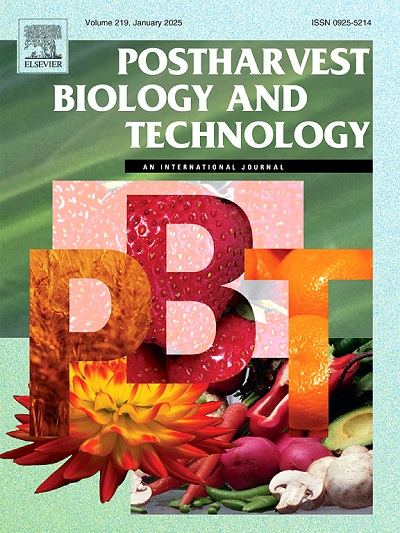Short-term postharvest UV-A and UV-B application enhances bioactive plant secondary metabolites in leafy vegetables
IF 6.4
1区 农林科学
Q1 AGRONOMY
引用次数: 0
Abstract
UV light is an important stimulator for bioactive secondary plant metabolites. Short-term postharvest applications are thought to enhance their concentration. Postharvest treatments with PAR light (control), UV-B (310 nm for 0.5 h, to 2 h), and two UV-A wavelengths (340 nm and 365 nm for 1.5 h, to 6 h) were applied to baby leaves of lettuce and chicory. Short-term UV-B (0.5 h and 1 h) and UV-A (1.5 h and 2 h) treatments achieved the highest accumulation of phenolic acids e.g. chicoric acid and sesquiterpene lactones e.g. 11(S),13-dihydro-8-deoxylactucin, in both lettuce and chicory. In chicory, chlorogenic acid levels increased with prolonged UV-A radiation. In addition, flavonoid glycosides were induced by both UV-B and UV-A light in chicory. These changes were accompanied by enhanced antioxidant activity after short-term postharvest UV treatments. UV-B (1 h) and UV-A (2 h) resulted in the highest levels of lutein and β-carotene in both lettuce and chicory. These findings underscore that short-term UV-B and UV-A treatments effectively modulate the concentration of bioactive compounds. Changes in sesquiterpene lactone concentrations may also have an impact on taste and consumer acceptance. Postharvest UV treatment can be applied as more cost effective and reliable than preharvest treatments, making them a real opportunity for commercial applications.
采后短期施用UV-A和UV-B可提高叶菜植物次生代谢产物的生物活性
紫外光是植物次生代谢产物的重要刺激物。采后短期施用被认为可以提高它们的浓度。采后用PAR光(对照)、UV-B(310 nm, 0.5 h ~ 2 h)和两个UV-A波长(340 nm和365 nm, 1.5 h ~ 6 h)处理生菜和菊苣幼叶。短期UV-B(0.5 h和1 h)和UV-A(1.5 h和2 h)处理在莴苣和菊苣中均获得了最高的酚酸积累,如菊酸和倍半萜内酯,如11(S),13-二氢-8-去氧酰基乳蛋白。在菊苣中,绿原酸水平随着UV-A辐射时间的延长而增加。此外,紫外- b光和紫外- a光均可诱导菊苣产生黄酮类苷。这些变化伴随着采后短期紫外线处理后抗氧化活性的增强。UV-B(1 h)和UV-A(2 h)导致生菜和菊苣中叶黄素和β-胡萝卜素含量最高。这些发现强调,短期UV-B和UV-A处理有效地调节了生物活性化合物的浓度。倍半萜内酯浓度的变化也可能对口味和消费者接受度产生影响。收获后的紫外线处理可以比收获前的处理更具成本效益和可靠性,使其成为商业应用的真正机会。
本文章由计算机程序翻译,如有差异,请以英文原文为准。
求助全文
约1分钟内获得全文
求助全文
来源期刊

Postharvest Biology and Technology
农林科学-农艺学
CiteScore
12.00
自引率
11.40%
发文量
309
审稿时长
38 days
期刊介绍:
The journal is devoted exclusively to the publication of original papers, review articles and frontiers articles on biological and technological postharvest research. This includes the areas of postharvest storage, treatments and underpinning mechanisms, quality evaluation, packaging, handling and distribution of fresh horticultural crops including fruit, vegetables, flowers and nuts, but excluding grains, seeds and forages.
Papers reporting novel insights from fundamental and interdisciplinary research will be particularly encouraged. These disciplines include systems biology, bioinformatics, entomology, plant physiology, plant pathology, (bio)chemistry, engineering, modelling, and technologies for nondestructive testing.
Manuscripts on fresh food crops that will be further processed after postharvest storage, or on food processes beyond refrigeration, packaging and minimal processing will not be considered.
 求助内容:
求助内容: 应助结果提醒方式:
应助结果提醒方式:


